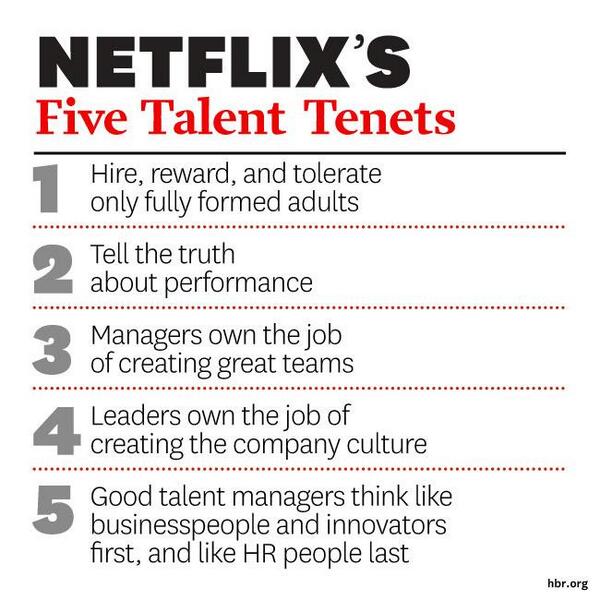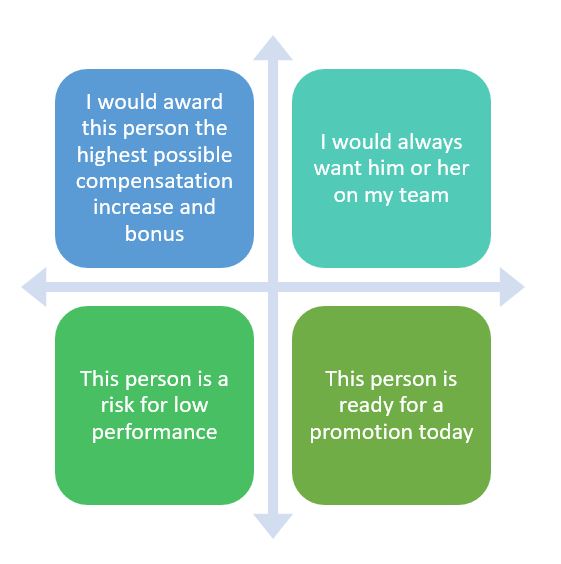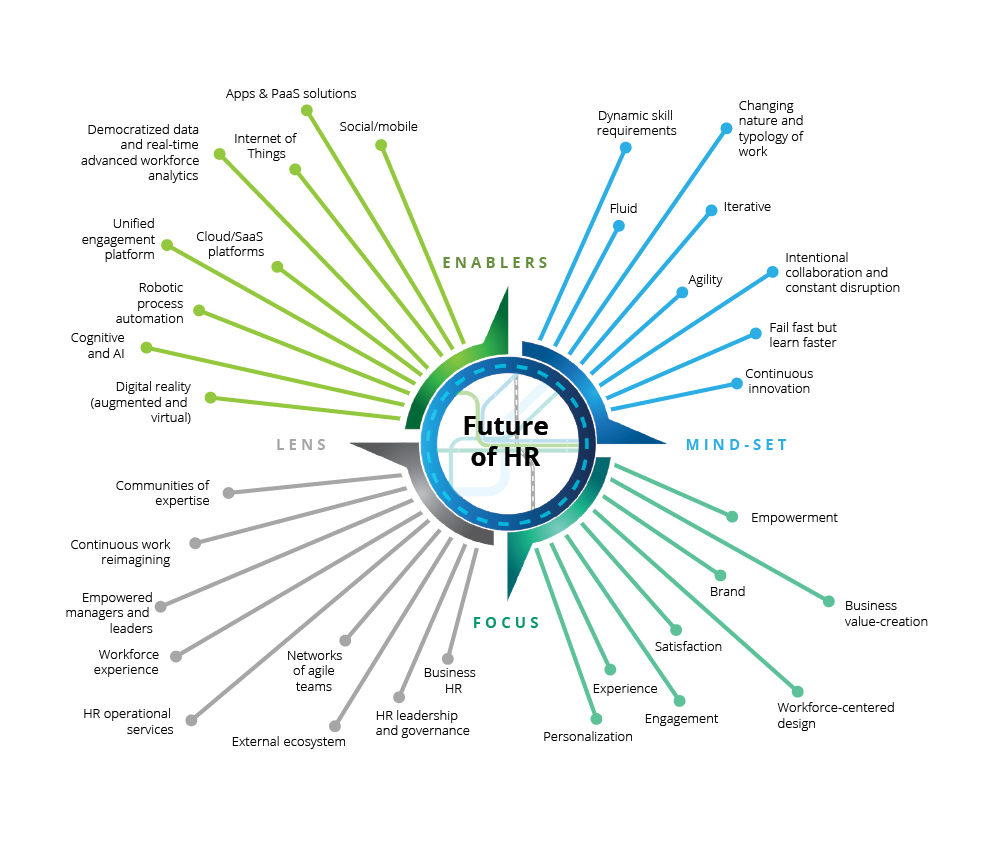Introduction
Traditionally HR has been more about compliance than it has been about developing and managing talent, and changes in HR have been a long time coming.
After World War II, when manufacturing dominated the industrial landscape, planning was at the heart of human resources. Simply put, companies recruited lifers, gave them rotational assignments to support their development, groomed them years in advance to take on bigger and bigger roles, and tied their raises directly to each incremental move up the ladder.
But business today is far less predictable, and these “15-year plans” are no longer sustainable practices in today’s game of talent management. HR must become more agile to properly support the rest of the organization, and take its rightful place as a strategic partner to the C-Suite.
Every CEO in the world would say that employees are their greatest asset. Some would even go as far as to say that their companies are nothing without their employees. Yet traditional HR departments in most companies spend endless amounts of time, effort, and money writing and enforcing policies to deal with problems that a small subset of employees might cause.
On Reinventing HR is a collection of eleven essays originally published in the Harvard Business Review. Each of these eleven articles has been hand-selected to create a collection of impactful readings on transforming and reinventing HR in your businesses.
Outdated HR Model
Many current HR tasks, such as traditional approaches to recruitment, onboarding, and program coordination, will become obsolete, as will expertise in those areas. The problem with Traditional HR typically is that most companies spend endless time and money writing and enforcing policies to deal with problems 3% of their workforce might cause.
As a result of these outdated HR models, companies are not properly developing their pipeline of future leaders, and the battle for talent means that companies are facing a real scarcity of top talent. Globalization compels companies to have to reach beyond their home markets and compete for the people who can help them drive their companies forward. These changing business dynamics are forcing business leaders to take a hard look at our HR functions and re-skill as necessary.
After reading On Reinventing HR two companies (Netflix and Deloitte) have undertaken some radical changes to their HR processes that I would like to take some time to unpack below.
Recruit and Chill the Netflix Way
Don’t look now but Netflix isn’t just disrupting the way we consume content these days. They are also reinventing the HR function itself. At Netflix, it starts with how they define and structure HR. Traditional HR processes and routines are organized under the finance function, while HR serves only as a talent scout and coach.
Next, Netflix spends all of their efforts hiring people that will put the company’s interests first and who will support their desire for creating a high-performance workplace. They believe in their heart of hearts that if you’re careful to hire people who will put the company’s interests first, who understand and support the desire for a high-performance workplace, 97% of your employees will do the right thing.
To accomplish this, Netflix sticks to the following tenets of talent management:

Lastly for Netflix, the best thing you can do for employees is hire only “A” players to work alongside them because excellent colleagues trump everything else. If you want only “A” players on your team, you have to be willing to let go of people whose skills no longer fit, no matter how valuable their contribution had once been. As a result, at Netflix, adequate performance gets a generous severance package when performance no longer keeps up with the job requirements.
Deloitte Redesigns Performance Evaluations
We have all worked for companies that have quarterly evaluation processes, and if you are like me, you probably dread them slightly. Partly because giving and receiving honest feedback is very hard, and partly because most performance evaluation processes are poorly designed.
Since 2015, Deloitte has been working hard to redesign its performance management system and process of evaluations. Not surprisingly, when Deloitte polled their employees, more than 58% believed that the company’s current performance management approach drove neither employee engagement nor high performance.
To improve this flawed process, Deloitte went deep into the “Science of Ratings.” What Deloitte found is that on average ratings of employees reveal more about the raters than they do the ratee’s performance. So much so, that 62% of the variance in the ratings of employee performance could be attributed to the individual rater’s peculiarities and/or biases. Actual performance only accounted for 21% of the variance. These abysmal stats forced Deloitte to radically redesign its performance evaluation process.
Now, Deloitte asks managers and team leaders four future-focused statements about each of their team members:

2. Given what I know of this person’s performance, I would always want him or her on my team [measures ability to work well with others on a five-point scale from “strongly agree” to “strongly disagree”].
3. This person is at risk for low performance [identifies problems that might harm the customer or the team on a yes-or-no basis].
4. This person is ready for promotion today [measures potential on a yes-or-no basis].
In effect, this radical redesign asks each of Deloitte’s team leaders what they would do with each team member rather than what they think of that individual, and is thus their new approach has become a much fairer system for “rating” employee performance.
My Key Takeaways
The goal of On Reinventing HR is to help people become more adept with HR strategies that will move their companies forward and raise the HR department to its rightful place as a strategic partner to the organization. Finishing this book has motivated me to spend all my time and effort carefully hiring people who will put the company’s interests first, and who ultimately understand and support the company’s desires to build a high-performance workplace. Some other key strategies I would like to employ going forward:
- Be on the lookout for the employees who are energy creators and develop them because these are the people who get to the heart of issues, reframe ideas, create informal bonds that encourage collaboration, and in general make the organization healthier and more productive
- Increase the number of check-ins with my people. The book has a phrase that I love: “Radically frequent check-ins.”
- Continue to work hard to separate compensation decisions from day-to-day performance management.
- Reconsider how we do our annual merit-based raises. Traditional one-time-a-year merit raises are less effective because too much time goes by. Radical solution: make salary adjustments twice a year.
- Curiosity and potential are oftentimes better indicators of future success. Interview and promote those who show:
(1) The right motivation and commitment to excel in the pursuit of unselfish goals
(2) A penchant for seeking out new experiences
(3) The ability to gather and make sense of information
(4) A knack for using emotion and logic to communicate and connect with people
(5) The wherewithal to fight for difficult goals despite the challenges they face.
To close off, if you’re careful to hire people who will put the company’s interests first, who understand and support the desire for a high-performance workplace, 97% of your employees will do the right thing. The problem with HR typically is that most companies spend endless time and money writing and enforcing policies to deal with problems the other 3% might cause.
You should read On Reinventing HR if you are interested in learning some tactical strategies to build your people-focused organization of the present and future. When it comes right down to it, your business is simply a collection of different people. Management and nurturing of people eat business strategies for lunch.
The Extras…
My Book Review on Goodreads
This book will inspire you to:
(1) Overhaul performance management practices to jump-start motivation and engagement; (2) Use agile processes to transform how you hire, develop, and manage people; (3) Establish diversity programs that increase innovation and competitiveness as well as inclusion; (4) Use people analytics to bring unprecedented insight to hiring and talent management; (5) Prepare your company for the double waves of artificial intelligence and an older workforce; (6) Close the gap between HR and strategy

